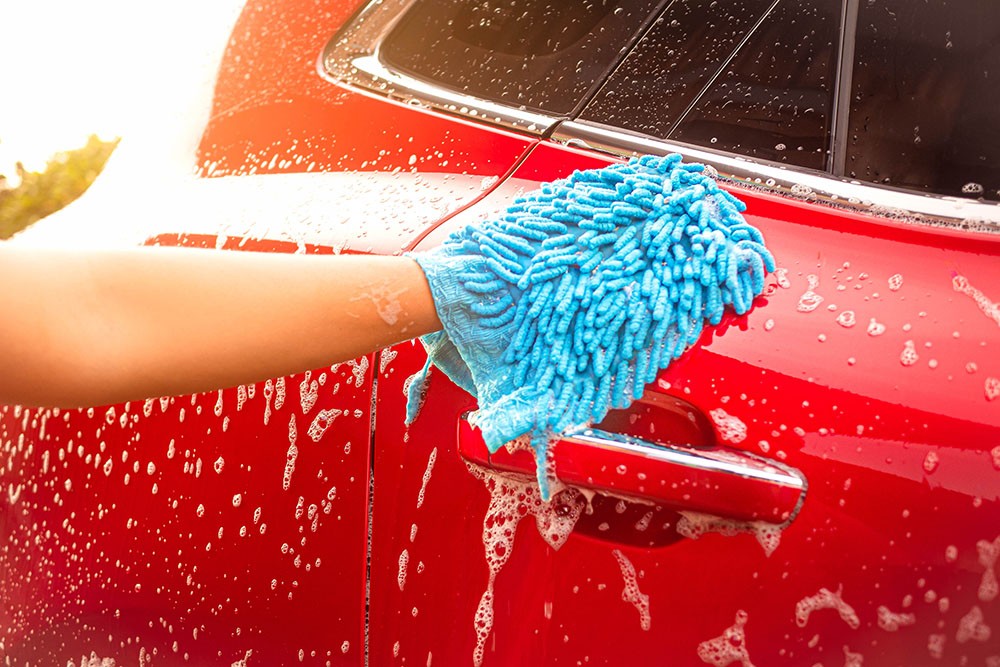The March Make-Over For A Showroom Shine

Does winter dirt and grime make you wince when you drive off in the morning?
We understand your frustration. Car care experts eyeball their vehicles each spring the way Inspector Clouseau investigated a crime scene.
So says Jim Dvorak of Mothers Car Care Products. After inclement winter has passed through his Southern California town of Huntington Beach, Dvorak makes a point of checking all his rides for winter damage. This is even more important in areas where there are icy roads and torrential rain.
Walk around your vehicle. Look under the carriage. Peer into the wheel wells and run a finger along the body panels.
“It’s the best way to assess any potential problems,” Dvorak said.
What’s Dvorak looking for?
“Signs of corrosion. An empty windshield wiper fluid tank. Dirt build-up on the undercarriage. Grime on the wheels.
“Nothing gets your vehicle clean like a bucket of car wash fluid and a wash mitt,” Dvorak said.
Here are some basic steps Dvorak suggests as spring weather makes its way across your town:
- Hose off the undercarriage of your vehicle and behind the wheel wells, where dirt can accumulate. If you’re using a power washer, use a gentle setting on the vehicle’s painted surfaces.
- If your vehicle is particularly filthy, take it to a drive-through car wash or do-it-yourself wash bay, and then follow up with a hand wash and wax. Contaminants cling to your vehicle surface and require some manual wiping to remove the thin film. Spray your vehicle with a quick detailer or spray wax when you get home.
“Car wash facilities don’t always get a vehicle 100% clean,” Dvorak said. “Sometimes you can’t see it but it’s there.”
- Invest in a bucket, wash mitt and microfiber towels. A hand wash with a proper car wash soap gives your vehicle a gentle cleaning, and these remove dirt without scratching the paint.
- Are your vehicle wheels looking dull and covered with grime? That could cause corrosion and permanently damage wheel finishes. Use a car wash soap and a little agitation, or a cleaner designed specifically for wheels. Use a separate wash mitt and wash bucket on wheels--the contaminants are highly corrosive to your vehicle’s painted surfaces.
- At least once every three months apply a coat of protection to prevent contaminants from bonding to the surface of your vehicle and dulling its finish. Contaminants can permanently dull the shine if left on your vehicle. Dvorak prefers carnauba-based wax or the latest ceramic coatings.
- Use a “spray wax” or waterless wash/wax if you’re pressed for time. It can remove any remaining residue from a drive-through wash and provides a layer of protection between the vehicle paint and the environment.
- Does the paint surface feel rough as you run your hand over it? Contaminants adhere to paint and, over time, cause discoloration. Use a clay bar to gently remove particles. Always apply wax or ceramic protection after using a clay bar. Make sure to follow label instructions as the process can vary from brand to brand, Dvorak suggested.
"Drivers often buy a particular vehicle because of its good looks,” Dvorak said. “It always seems to drive better -- and you feel better -- when it’s clean, shiny and looking good.”